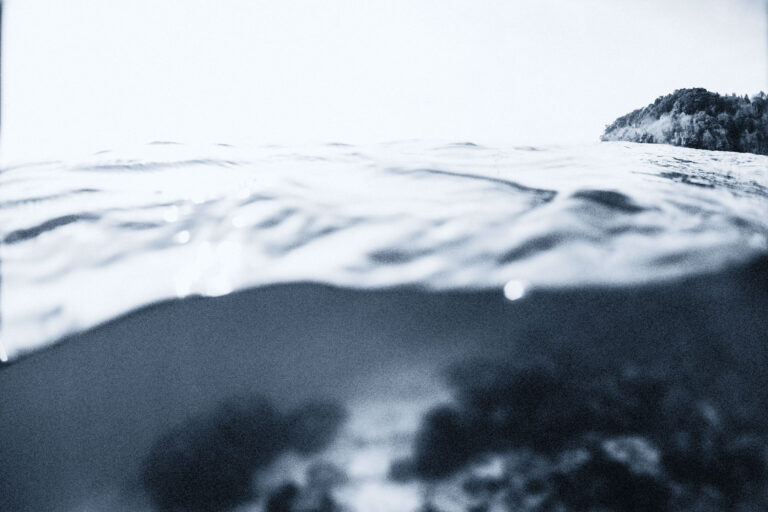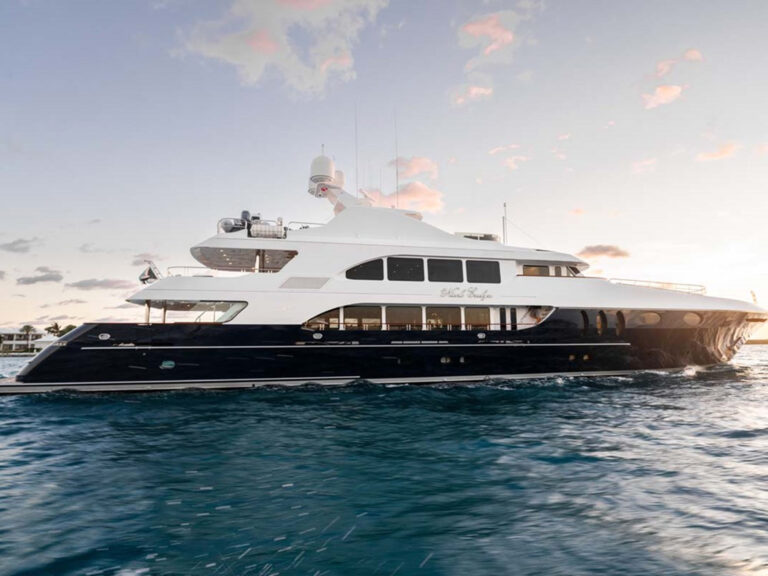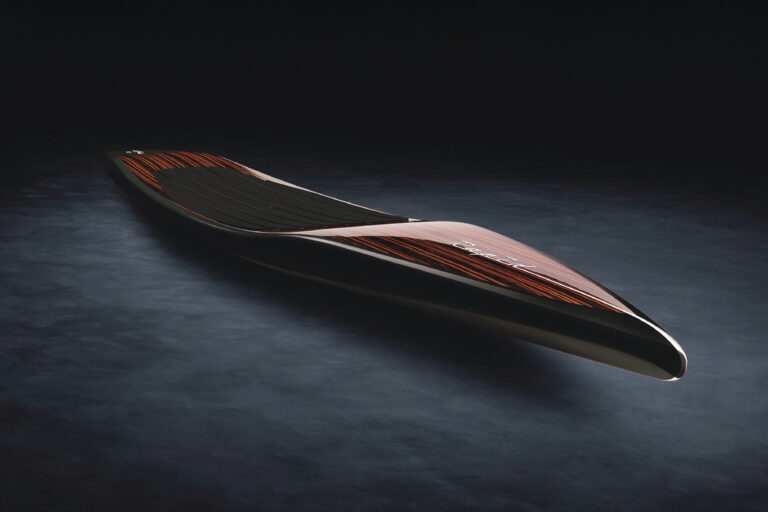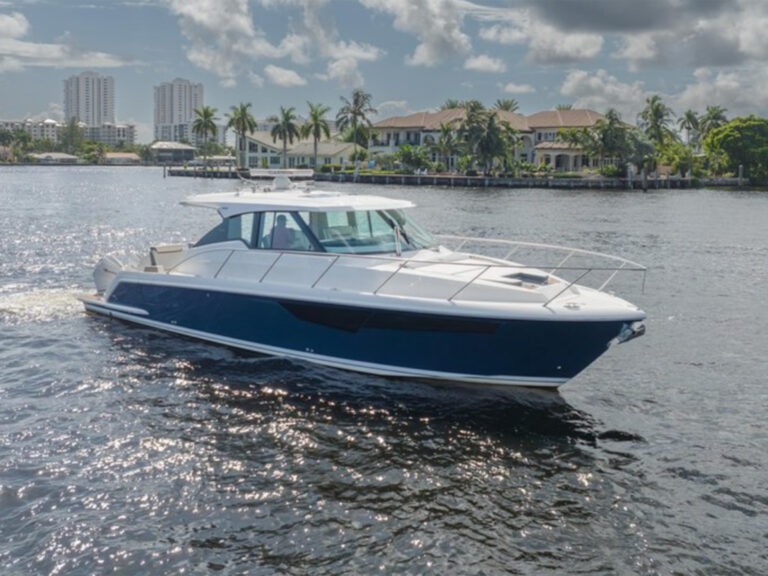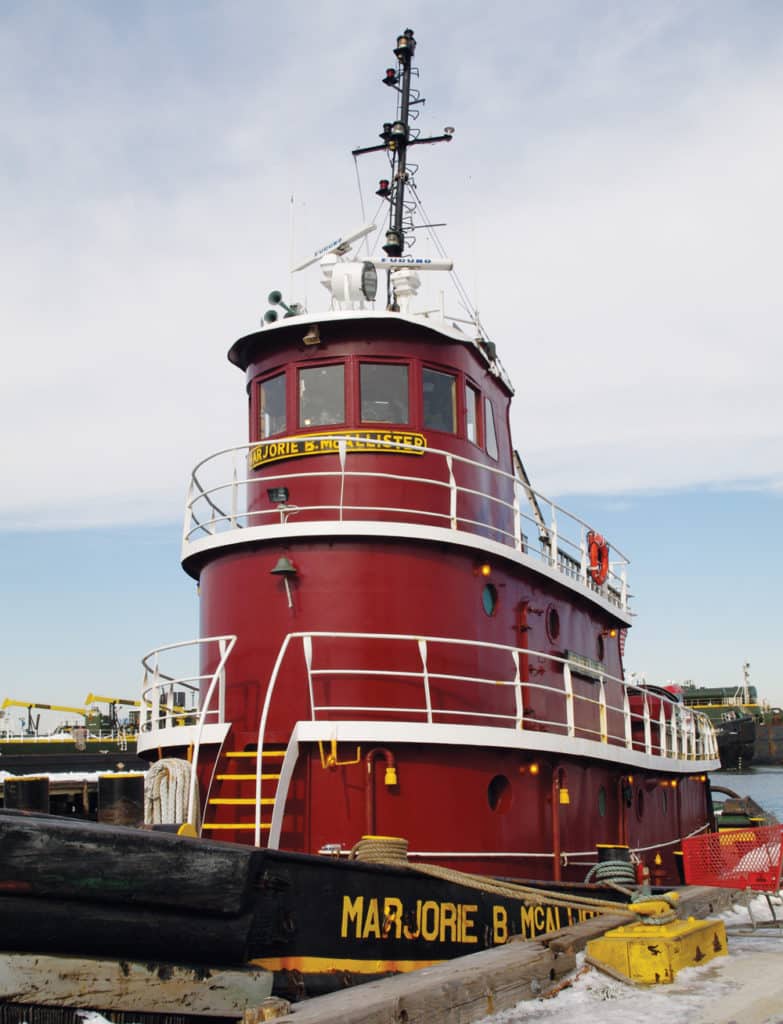
McAllister Towing Fleet
They looked about as relaxed as any two guys about to back a boat off a dock on a Friday afternoon. But this wasn’t any dock — it was berth number 17 in Port Newark, New Jersey. And the boat wasn’t a weekend cruiser with a cooler full of beer in the cockpit — it was the 787-foot steel RO-RO ship Tamerlane. Docking pilot Jeff McAllister of McAllister Towing and Capt. Arvid O. Reyne of Wallenius Wilhelmsen leaned out the bridge window as the crew cast the lines off, eight decks below. The view to starboard looked out across acres of brand-new cars, arrayed like an obsessive-compulsive kid’s prized Matchbox toy collection. Six hundred of those, Chevrolets made in South Korea for the American market, had rolled off the Tamerlane in the 12 hours since she’d tied up. It was now time for the ship to head on to Bremerhaven, Germany.
From the starboard wing controls of the bridge, McAllister gave the initial order to the captain, then raised his handheld VHF and advised the 4,000-horsepower, twin-screw tug Marjorie B. McAllister hovering near the stern to stand by. The 67,140-ton Tamerlane moved slowly off the dock and began backing down the Port Newark channel. The Marjorie B. assisted from the starboard quarter.
As the stern cleared the Orange Sun tanker, which was docked on the starboard bulkhead just outside the channel, McAllister ordered the beginning of a turn to starboard and sent the Marjorie B. around to assist from the port quarter as Tamerlane continued backing down Newark Bay.
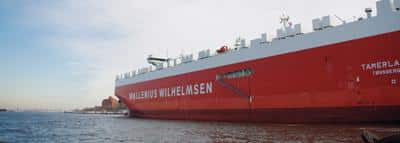
New York Harbor works on a two-pilot system, McAllister had explained as we boarded the Marjorie B. in Staten Island for the ride up to Tamerlane‘s berth. In the Lower Bay, from Ambrose Light to the Verrazano Narrows, a Sandy Hook pilot boards the ship and directs the captain on his inward or outbound passage. Within the confines of the Upper Bay, tugs are required to dock incoming and outgoing commercial traffic. A docking pilot is sent aboard to direct the ship’s and the tug’s movements from the bridge. In both instances, the pilot sets the course and the master or his designated officer steers the course. What’s impressive as hell, of course, is that McAllister is driving the ship with no hands, backwards, and correcting the course for conditions based on nothing but experience — although he has plenty of that.
It takes 10 years to become a docking pilot, and these jobs are amongst the most coveted in the work-boat world. At McAllister, docking pilots work on a schedule of four days on/four days off and there are typically five on the schedule at a time. In between jobs, the pilots hang out on a dockside barge that, well, let’s just say it, could use a woman’s touch. A large flatscreen TV and a battered sofa dominate the living area; a fluorescent-lit kitchen suggests that pizza may be ordered in fairly often, and the general feeling is “dormitory.” While the Four Seasons it ain’t, it gives the pilots, most of whom live several hours or more away, a place to rest while they’re on duty.
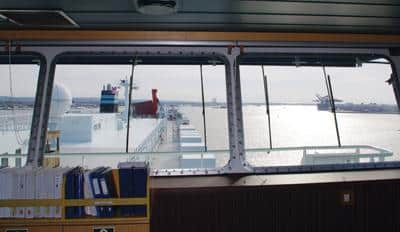
“I typically have three or four jobs a day,” explained McAllister, who had met the Tamerlane in the Upper Bay the night before on her way to the dock.
He gestured at the foredeck with his handheld VHF. “Look at that!” he said. “What people don’t realize is that from here there is almost a quarter of a mile blind spot beyond the bow of the ship.” In other words, if you’re out and about in a busy harbor, for the love of God give these guys a wide berth. If you get too close they can’t see you at all — and they can’t necessarily stop or avoid you even if they do!
The margins for error aboard a ship like Tamerlane are even smaller than you think. A glance at a nautical chart shows that the dredged channel is about 1,000 feet wide and 45 feet deep at mean low water with depths of two to 11 feet just outside the channel. Tamerlane‘s draft is 38 feet and her beam is 105 feet. And she doesn’t get that channel all to herself. Factor in wind and these massive vessels’ restricted ability to maneuver, and it’s easy to see why the powerful tugs are necessary. Even with a gentle 10 knots of breeze, the radar screen showed Tamerlane crabbing to port.
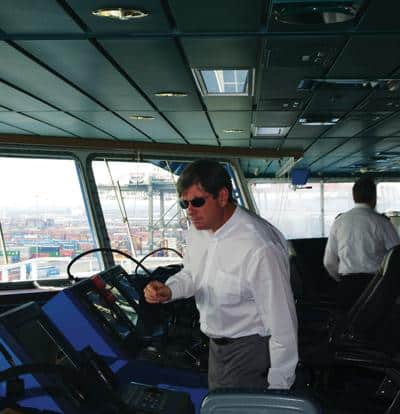
Several years ago, Orange Sun, the ship we had passed at the end of Port Newark Channel, was involved in a highly publicized incident. She is a double-hull steel vessel and the world’s largest fruit-juice tanker. (Her cargo of concentrated orange juice from Brazil is among the most valuable in the harbor, McAllister said, which is pretty amazing when you consider the ships full of oil, autos, computers, etc. that ply these waters.) On January 24, 2008, Orange Sun was involved in an allision in Port Newark Channel with the world’s largest backhoe dredge. The accident report from the National Transportation Safety Board found fault with the master of the ship and the helmsman but not with the pilot. They tend not to make mistakes, which is good, because the stakes are very, very high. As McAllister pointed out to me, “If you put a ding in this prop, you’re talking about repairs that start in the millions.”
And that’s what I would call a very bad day at the office.
McAllister Towing, (212) 269-3200; www.mcallistertowing.com
McAllister Towing is a Family Affair
And has been since before the Brooklyn Bridge was built.
It started with Capt. James McAllister, an immigrant from County Antrim, Ireland, and a single boat in 1864. Today’s president of McAllister Towing is Brian McAllister, a fourth-generation company man and the great-grandson of the founder. There are now five fifth-generation McAllisters (including Jeff) involved in the business, which has offices that range from Portland, Maine, to San Juan, Puerto Rico. McAllister’s current fleet consists of more than 70 tugboats, including 24 tractor tugs. McAllister hasn’t been content to rest on its laurels, either. It has been a pioneer in tugboat development, introducing (amongst other things) the first deep-sea tug-barge combinations (1918) and the first diesel tugs (1927) in New York Harbor. While I was aboard the Marjorie B., I experienced her hydraulically lifted pilothouse — a McAllister innovation from the 1970s — which elevates the wheelhouse and gives the tug captain an eye height of 45 feet for barge work. To put it technically: very cool





